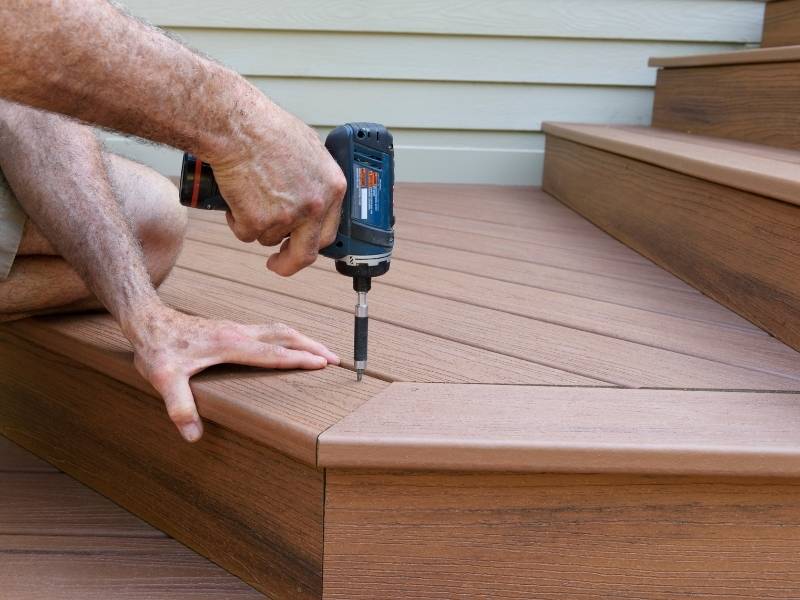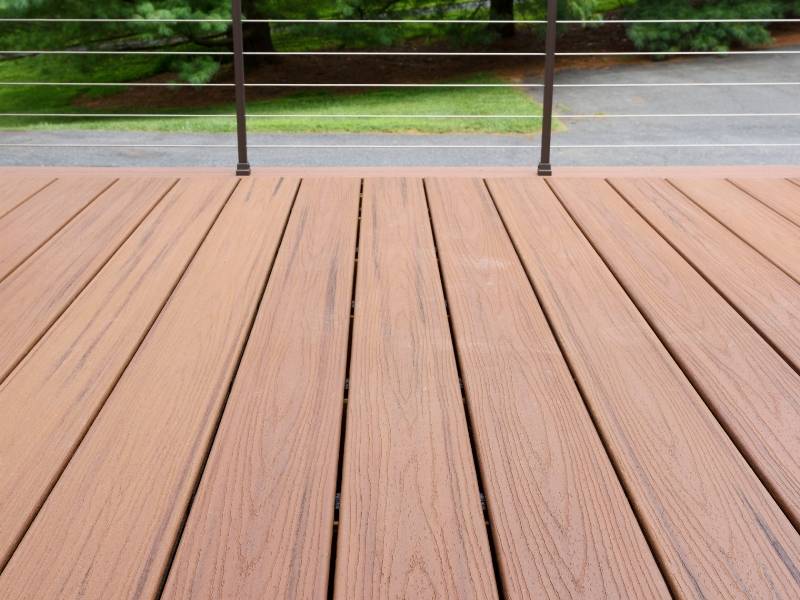When selecting the right materials for a construction project, many professionals, architects, engineers, and developers consider the mechanical properties. The mechanical properties of composite materials refer to the physical properties of objects when exposed to external forces. It measures the capacity of materials to withstand such forces and remain functional.
In the construction industry, one of the newest technologies is WPC or wood-plastic composites. The main application of composites is outdoor construction, such as outdoor flooring composite boards, composite fencing boards and cladding materials. But what are the mechanical properties of plastic composites?
Interesting Facts About the Mechanical Properties of Composite Materials
① Tensile Strength
Ultimate tensile strength, also called tensile strength, is the capacity of a material to withstand tension. It measures the maximum stress, such as stretching and pulling, a material can handle before it breaks. The unit of measuring tensile strength is Megapascal (MPa), often measured perpendicular and parallel to the boards’ grain. The tensile strength of composites averages at 30MPa. Plastic composites for outdoor flooring often have higher tensile strength than common wood materials but often have less than hardwoods.

Why is tensile strength crucial? When building bridges or decks, you will need to consider how much load or tension it can handle. Having inadequate tensile strength can lead to structural failure. Not considering tensile strength will reduce the structural integrity of a project and may cause accidents.
② Compressive Strength
Compressive strength is the capacity of a material to withstand compression. Unlike tensile strength, it measures the ability of materials to withstand inward force. It includes flattening and compressing of the materials due to high pressure. As a result of this pressure, materials can either break, fracture, or have a deformed shape. Like tensile strength, the unit used to measure compressive strength is Mpa.
Composite materials have high compressive strength, averaging at 45 Mpa. However, many studies show composites have higher compressive strength parallel to the “grain” or the extrusion than perpendicular to it.
Why is compressive strength crucial? Like tensile strength, it is one of the main factors determining the overall durability of a structure. Low compressive strength will lead to deformation and fracturing, which can be otherwise dangerous for structures expected to have heavy foot traffic, such as bridges, pavements, and decks.
③ Shear Strength
Shear strength determines the capability of materials to withstand stress or pressure when layers slide or shift. In short, it measures the capacity of a material to resist failure under pressure from sliding or shifting sides. It can either be perpendicular or parallel to the grain for wood materials or extrusion for composites. In terms of measurement, the parallel strength is often higher than perpendicular shear strength.

In most cases, composite materials exhibit higher shear strength than wood of the same quality. Many studies show that they have around 25 to 30 MPa higher than wood of comparable quality.
Why is shear strength crucial? Like the previous mechanical properties, it contributes to the overall quality of a material. In deckbuilding, it’s a critical mechanical property to consider for subframes. Knowing the shear strength of materials also helps in selecting methods and tools for handling such material.
④ Hardness to Withstand Wear and Tear
Hardness is the measure of how much a material can withstand scratches, indentation, and wear. There are several methods of measuring the hardness of a material. Wood uses Janka ratings, whereas others, including composites, make use of Rockwell and Brinell methods. Both methods for wood and composites utilize a steel ball pushed inward in the material until it reaches half of the balls’ depth. However, there are some differences in execution, timing, and several other details.
Composites have varying hardness, but most often have higher hardness ratings than usual wood materials. However, several varieties of hardwoods have higher hardness ratings than most composites.
Why is hardness crucial? As you want your structure, whether it’s a deck, fence, doors, or walls, to be dent and scratch-free, you will want a material having the highest hardness rating. As with other mechanical properties mentioned, it’s also a clear indication of a materials’ quality.
⑤ Differences in Mechanical Properties
Like any other construction material, composites come in various quality and composition. Differences in mechanical properties of composite materials vary from one to the other. If you want to know the specifics, you must consult your suppliers or manufacturers. With that said, composites are some of the best choices for your construction projects, whether it’s for building decks, bridges, walls, or fences. Composites tend to have excellent compressive and shear strength and higher tensile strength and hardness.
If you have any suggestions you want to add, please do so in the comments below. Also below, you will find links to more interesting articles about ALL things DESIGN for your home or family.
Images Courtesy of Canva.
Other Posts You Might Enjoy:
5 Things You Can Do With Excess Construction Materials
Human Resources in Construction Companies





